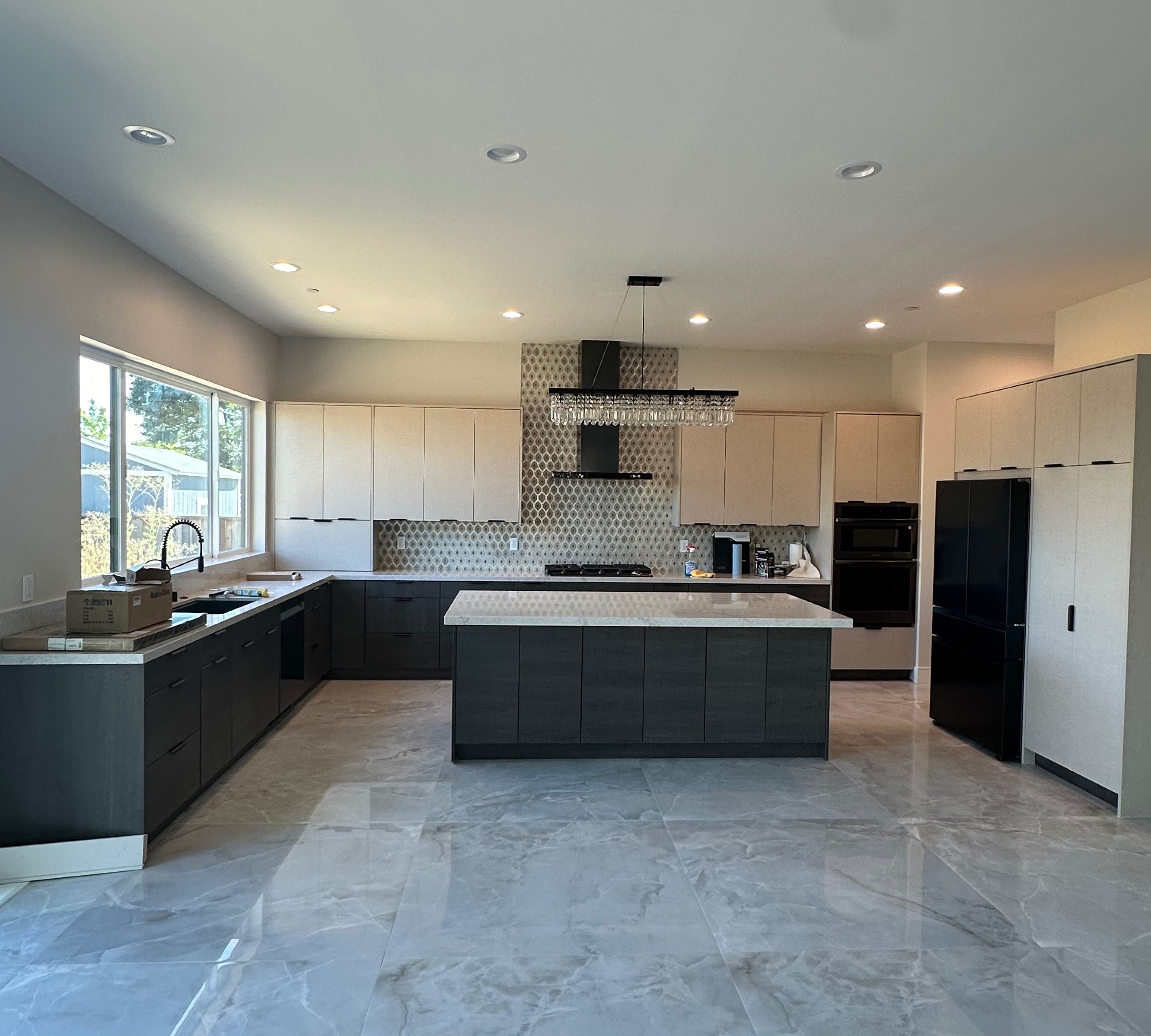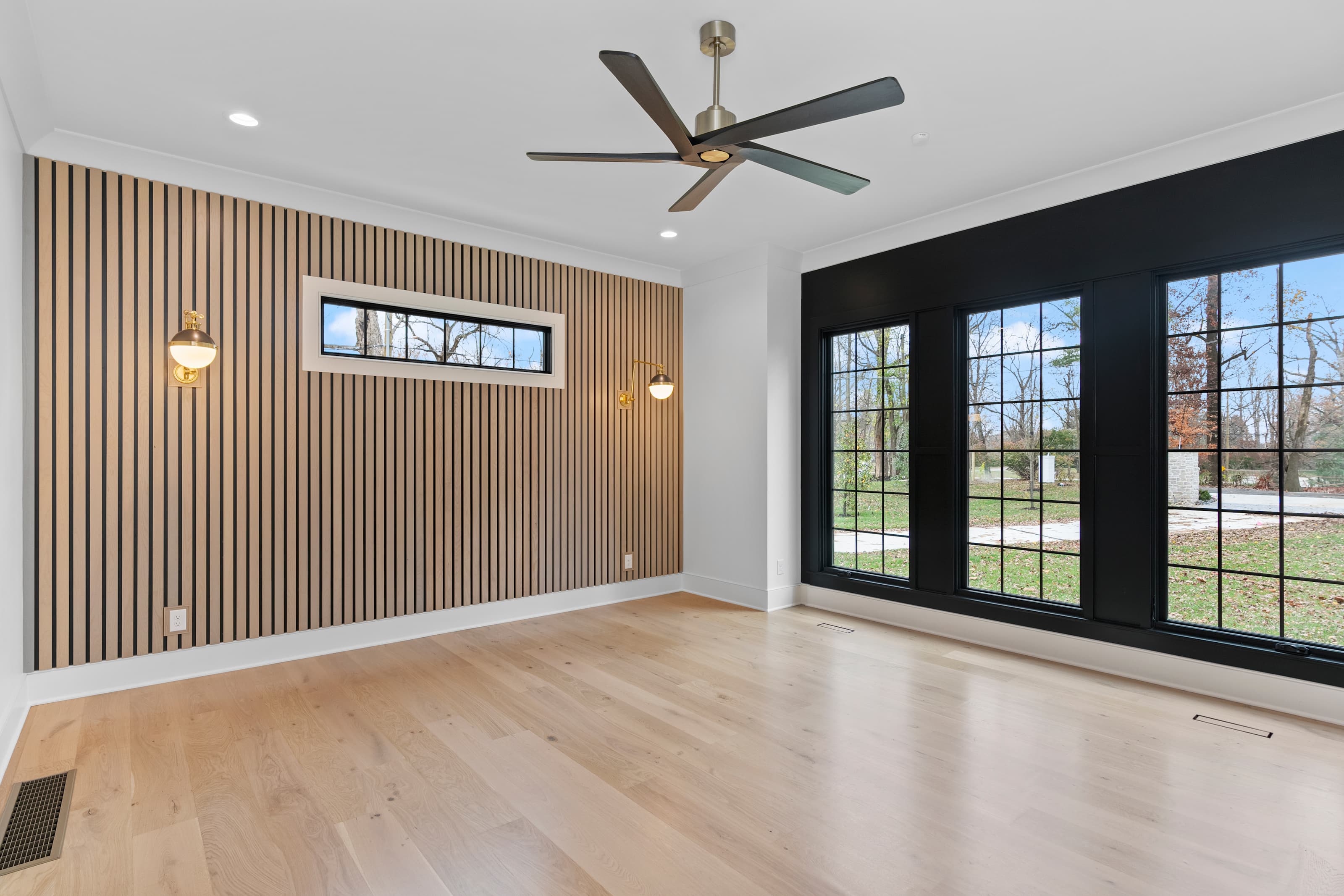Are you staring at your kitchen walls and ceiling, dreaming of a fresh coat of paint to breathe new life into the heart of your home? Painting your kitchen can be a game-changer, transforming it from dull and drab to bright and welcoming.
But, of course, the big question lurking in your mind is, “How much will it cost? ” Understanding the cost to paint your kitchen walls and ceiling involves more than just the price of paint. You’ll want to consider factors like the size of your kitchen, the type of paint you choose, and whether you’re going the DIY route or hiring a professional.
This article will break down these elements step-by-step, so you can budget confidently and avoid any unpleasant surprises. Ready to dive into the details and give your kitchen the makeover it deserves? Let’s get started!

Credit: freemansconstruction.com
Factors Affecting Painting Costs
Several factors influence the cost of painting kitchen walls and ceilings. Knowing these helps plan your budget better. Costs vary depending on the room’s specifics and paint choices.
Room Size And Surface Area
The larger the kitchen, the more paint and time it needs. Surface area includes walls and ceilings. More area means more materials and labor. Measuring the space accurately helps estimate costs well.
Type Of Paint And Finish
Paint types differ in price and quality. Standard latex paint costs less than specialty or eco-friendly paints. Finish options affect cost, too. Matte finishes are usually cheaper than satin or semi-gloss. Choosing the right paint impacts durability and appearance.
Wall And Ceiling Condition
Damaged or uneven surfaces require extra work. Cracks, holes, or stains need fixing before painting. This prep adds to the total cost. Smooth, clean surfaces reduce time and expenses.
Labor Charges And Location
Labor costs vary by region and painter experience. Urban areas often have higher rates. Skilled painters may charge more but offer better quality. Getting multiple quotes helps find fair pricing.

Credit: www.angi.com
Average Costs For Kitchen Wall Painting
Painting kitchen walls and ceilings can transform the space quickly. Knowing the average costs helps plan your budget wisely. Several factors influence the price, including size, materials, and preparation work. Understanding these costs makes the project clearer and easier to manage.
Cost Per Square Foot
Most painters charge between $1.50 and $3.50 per square foot. This price usually includes labor and basic materials. Larger kitchens may reduce the cost per square foot slightly. Small kitchens might have a higher rate due to minimum charges. Ceilings often cost a bit more because of the extra effort.
Material Expenses
Paint quality affects the overall cost significantly. Standard paint costs about $20 to $40 per gallon. Higher-quality paints range from $40 to $70 per gallon. Kitchen paints often have a satin or semi-gloss finish for easy cleaning. Primer is sometimes necessary and adds to the material cost. Brushes, rollers, and tape are small but important expenses.
Additional Prep Work Costs
Proper preparation ensures a smooth and lasting finish. Cleaning, sanding, and patching holes may add to the cost. Mold or mildew removal requires special treatment and increases expenses. Removing old wallpaper or multiple paint layers also raises the price. Rough surfaces take more time and materials to prepare. Expect to pay extra if walls need repairs or priming before painting.
Average Costs For Ceiling Painting
Painting kitchen ceilings costs depend on several factors. Knowing the average price helps plan your budget well. Most homeowners spend between $150 and $500 to paint a kitchen ceiling. Prices vary by ceiling type, height, and finish. Understanding these details ensures you get the best value for your money.
Ceiling Surface Types
Ceilings come in different materials and textures. Smooth drywall is the easiest and cheapest to paint. It usually costs less than textured surfaces. Popcorn ceilings require more prep work and paint. This increases labor time and overall price. Wood or metal ceilings need special paint types. These surfaces can cost more to cover properly.
Cost Variations By Height
Ceiling height affects painting costs. Higher ceilings need ladders or scaffolding for access. This adds to labor time and safety measures. Standard 8-foot ceilings have lower costs. Ceilings over 10 feet usually cost 20%-30% more. Steep or vaulted ceilings also increase the price. Extra care and equipment raise the total cost.
Special Finishes And Textures
Special finishes add style but increase painting costs. Glossy or semi-gloss paints cost more than flat paints. They require extra coats for a smooth look. Textured finishes like stucco or plaster need more paint. Skilled painters charge more for these detailed surfaces. Some finishes also need primer, adding to the price.
Diy Vs Professional Painting
Deciding between DIY and professional painting for your kitchen walls and ceiling can greatly affect your budget and the final look. Both options have clear advantages and challenges that you should weigh carefully. Understanding these can help you choose the best path for your space and skill level.
Cost Savings With Diy
Painting your kitchen yourself can save a significant amount of money. You only need to buy paint, brushes, rollers, and some protective gear. These supplies usually cost less than paying a professional’s hourly rate.
However, consider hidden costs like extra paint from mistakes or renting equipment. If you enjoy hands-on projects, painting yourself can be rewarding and budget-friendly.
Risks And Challenges
Painting a kitchen involves tricky spots like corners, ceilings, and areas near cabinets. If you don’t prep properly, paint can peel or drip, ruining your hard work.
Also, ceilings require working overhead, which can be tiring and difficult to do evenly. Mistakes may lead to uneven color or damage to walls, costing more in repairs later.
When To Hire A Pro
Consider hiring a professional if you want flawless results and have a tight schedule. Pros bring experience, tools, and techniques that ensure even coverage and clean lines.
Also, if your kitchen has repairs or old paint issues, a painter can handle surface prep expertly. Ask yourself: Is the potential stress and extra time worth the savings? Sometimes, paying for quality work can save money and headaches down the road.
Tips To Reduce Painting Costs
Painting your kitchen walls and ceiling can quickly add up, but you don’t have to overspend to get great results. Small changes in how you choose supplies, prepare surfaces, and plan your project can save you a surprising amount. Let’s look at some smart ways to cut costs without sacrificing quality or style.
Choosing Affordable Paints
Picking the right paint doesn’t mean buying the most expensive brand. Many affordable paints now offer excellent coverage and durability. Look for paints labeled as “kitchen and bath” since they resist moisture and stains better.
Consider buying paint in larger quantities if you have a big kitchen; it often lowers the price per gallon. Also, don’t forget to check for sales or discounts at local stores or online. Sometimes, off-brand paints perform just as well as name brands but cost less.
Prepping Surfaces Efficiently
Good preparation is key to a long-lasting paint job, but it doesn’t have to be costly or time-consuming. Clean walls thoroughly and fix small holes with inexpensive spackle before you start. Skipping proper prep might save time upfront but could mean repainting sooner.
Gather all your tools beforehand—like painter’s tape, drop cloths, and sandpaper—to avoid multiple trips to the store. You can save money by using reusable supplies or borrowing tools from friends or neighbors. Have you ever noticed how much easier painting goes when the surface is smooth and clean?
Scheduling And Timing
Timing your paint project can affect the overall cost. Paint stores often offer discounts during slower seasons or weekdays. Planning your painting when contractors or professionals have more availability might also reduce labor costs if you hire help.
Try to paint during dry weather to avoid issues with paint drying slowly or unevenly. Weekend warriors, beware: rushing your project over a couple of days can lead to mistakes that cost more to fix. Have you thought about spreading the work over several weekends to keep stress and expenses down?

Credit: www.angi.com
Frequently Asked Questions
How Much Does It Cost To Paint Kitchen Walls?
Painting kitchen walls typically costs between $200 and $500. The price depends on wall size, paint quality, and labor charges.
What Affects The Price To Paint Kitchen Ceilings?
Ceiling paint cost varies due to ceiling height, surface condition, and paint type. Higher ceilings and repairs increase the overall price.
Is It Cheaper To Paint Kitchen Walls And Ceiling Together?
Yes, painting both walls and ceiling together often reduces labor costs. Painters save time and materials when combining the job.
How Long Does Kitchen Painting Usually Take?
Painting kitchen walls and ceiling usually takes 1 to 3 days. Time depends on room size, prep work, and drying time.
Conclusion
Painting kitchen walls and ceilings costs vary by size and materials. Choosing the right paint can save money and time. Proper preparation helps the paint last longer and look better. Hiring a professional ensures a smooth and even finish. Remember to factor in labor and supplies for an accurate budget.
A fresh coat of paint can brighten your kitchen and add value. Plan carefully to get the best results without overspending.

